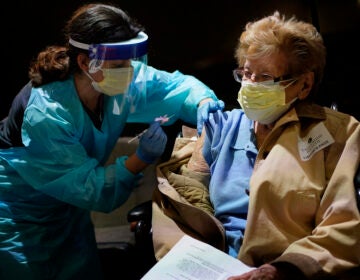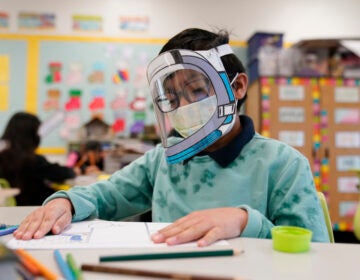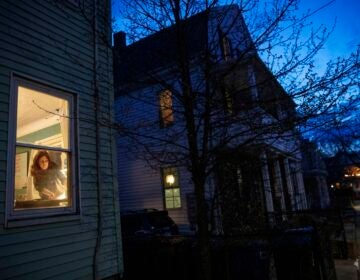Contact tracing for COVID-19 starts on a small scale in Philly
The practice is considered key to reopening society. Some volunteers at the University of Pennsylvania have begun the laborious process.
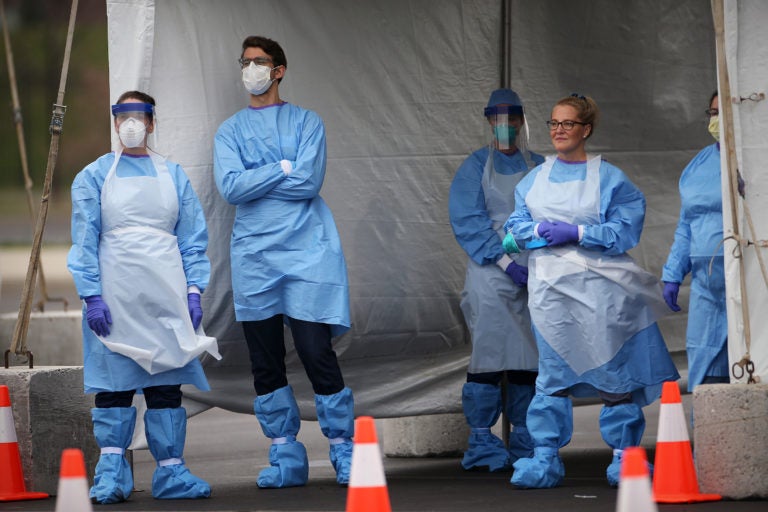
Medical workers wait for cars to pull up to the swabbing tent at the city's coronavirus testing site next to Citizens Bank Park in South Philadelphia on Friday, March 20, 2020. (The Philadelphia Inquirer)
Updated 10:25 a.m.
Volunteers with the University of Pennsylvania have begun the laborious process of calling anyone who’s been in contact with someone who is diagnosed with COVID-19. The practice, known as contact tracing, is considered key to reopening society, but is largely regarded as having its greatest impact when there are fewer cases to track.
Contact tracing takes a lot of time and a lot of labor. When a COVID-19 case is confirmed, a tracer reaches out to the patient to find out who he or she has been in contact with in the days leading up to the diagnosis.
“It’s a little spooky,” said David Nash, founding dean emeritus of Jefferson’s College of Population Health. “Who’s at home with you, where’d you go, what’d you have to eat, who’d you talk to — it’s a stranger calling you, asking some pretty intimate questions.”
Next, the investigator reaches out to those individuals to inform them they’ve been exposed — without revealing the identity of the person who exposed them — and directs them to quarantine for two weeks from the date of their exposure, so they don’t infect anyone else. That way, instead of everyone being forced to stay at home indefinitely, only those with known exposure would be, and for a shorter amount of time.
“We do think that that contact tracing is essential to be able to safely reopen society,” said Philadelphia Health Commissioner Thomas Farley. “We have to try to contain this infection so that we don’t have to live like this, where everybody is separated from everybody else.”
Because it’s such an involved process, contact tracing is optimal when there is a small number of cases of an infectious disease. Ideally, it would have been used as a containment strategy on the front end of the coronavirus outbreak, to identify cases or clusters of cases, notify those affected, and get them out of circulation to prevent them from infecting others. But because cases soared exponentially in Philadelphia, as it has in other places, the Public Health Department quickly lost the capacity to trace contacts.
Though it may be of some use now, Farley said a strategy like this would be most effective once new cases are down to about 50 per day.
On Wednesday, Philadelphia recorded 615 new cases.
Penn’s effort is starting on a very small scale. Carolyn Cannuscio, director of research for the Center for Public Health Initiatives at the Perelman School of Medicine, said so far her team has trained a few dozen volunteers, most of them medical or nursing students, or students in the schools of public health or social work.
The volunteers are working with the team responsible for delivering positive COVID-19 results to prioritize those patients within Penn’s medical system deemed “high exposure risk” because they live in congregate settings, such as nursing homes, or because they work in high contact occupations. That group comprises the dermatology team, which was redeployed to deliver test results since their normal appointments and procedures have been largely canceled.
The team at Penn is in contact with the city Health Department, to let it know when they begin reaching out to the people these patients have been in contact with.
“The processes are still being hammered out,” said Cannuscio, noting that the volunteers made their first set of calls over the weekend. “It’s a more manageable process when there are fewer cases.”
Tough without tests
There are many challenges to successful contact tracing, the most glaring being the ability to test for the coronavirus on a large scale, which is still limited in Philadelphia and around the country.
Ideally, when a contact of a COVID-19 patient is called, that person could receive a test in addition to — or in some cases, perhaps instead of — being told to quarantine for two weeks. But the United States has nowhere near the number of tests to make a process like that possible.
Public health workers have been using contact tracing as a tool to track and contain infectious diseases for decades. Philadelphia’s Public Health Department uses it when there is an outbreak, such as salmonella, geographically focused at a specific restaurant. Officials there have also been using it to track the transmission of sexually transmitted infections such as syphilis for years.
But contact tracing for COVID-19 differs from those diseases because time is of the essence: In the lag between the onset of symptoms, the ability to get tested, test results coming in, and the beginning of contact tracing, the contacts of an infected COVID-19 person are still circulating through society, potentially exposing others.
That’s why the process is so labor-intensive: According to a recent report from Johns Hopkins University, Wuhan, China, had 9,000 contact tracers for a city of 11 million — that’s one contact tracer for roughly every 1,222 people.
Applying that same ratio to Philadelphia, a city of 1.6 million, would mean training a team of 1,309 contact tracers. On a national level, Johns Hopkins estimates a need for 100,000 investigators. So far, Penn has trained 63.
Cannuscio said that because the anticipated need for contact tracing might ebb and flow with the rise and fall in case counts, maintaining a sustainable cadre of investigators would require paying them.
“We know we may go through multiple waves of this epidemic, and this is a tool we want to be able to use and lean on,” she said.
Farley said the city would need to seek funding from state, federal and local governments to hire the necessary workforce, plus philanthropic donations. He called on anyone who can offer employees for this effort to do so.
The authors of the Johns Hopkins report noted that at the average pay for a community health worker of $17 an hour, the potential overall need for funding for a cadre of 100,000 contact investigators would amount to about $3.6 billion.
In Boston, the nonprofit Partners In Health already has announced plans to hire 1,000 contact tracers.
On Thursday, Pennsylvania congresswoman Chrissy Houlihan, whose district includes Chester County, called for the creation of a National Public Health Corps to execute contact tracing across the country.
Privacy concerns
Because contact tracing is so labor-intensive, other countries have used digital tools to assist the investigators.
In Taiwan, health officials linked medical records, health insurance records, and travel history to contact-tracing efforts. In China, people can scan QR codes on their smartphones when they enter businesses or public transportation that coincide with personal information. In Singapore, Bluetooth data tracks who you’ve been in contact with.
“I’m not sure Americans are ready yet for all of that,” said Nash, of Jefferson.
Farley said Philadelphia is exploring various digital tools but hasn’t made any decisions yet.
Nash is advocating for an “army of first preventers” that would be charged with contact tracing. The cadre would be a collaboration between Philadelphia’s major medical institutions and some combination of city, state and federal governments.
“Yes, it’s people-intensive, but we have a lot of people out of work and we have academic medical centers who I think could do a better job collaborating,” Nash said.
He argued that the same dedication of resources that’s seen going to clinical care at the bedside during the pandemic should be devoted to tried-and-true public health efforts like contact tracing.
“We only think about public health when there’s a crisis,” said Nash, noting that nationally, only about 2.5% of the $3.6 trillion spent each year on health care has gone toward public health.
“We’ve got to change that ratio a little bit and give the public health community the tools they need to get the job done.”
—
This article was updated to correct a health care spending figure.
WHYY is your source for fact-based, in-depth journalism and information. As a nonprofit organization, we rely on financial support from readers like you. Please give today.


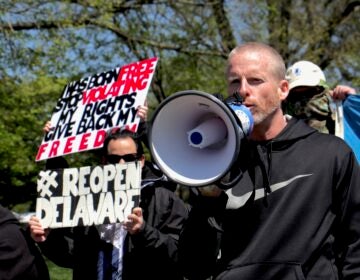
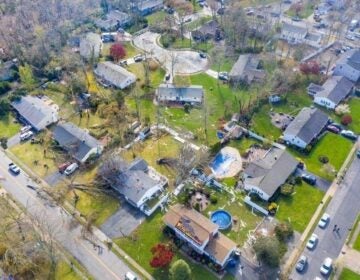
![CoronavirusPandemic_1024x512[1]](https://whyy.org/wp-content/uploads/2020/03/CoronavirusPandemic_1024x5121-300x150.jpg)
